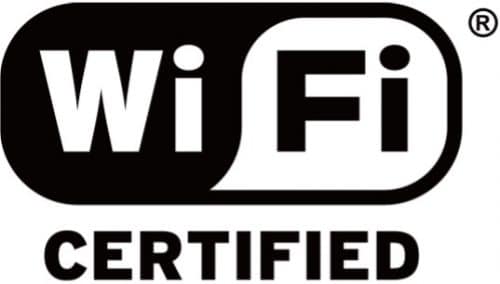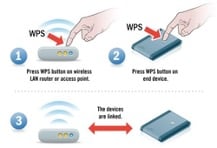The ever increasing use of mobile and handheld electronic devices, smart home appliances, and widespread adoption of work-from-home, telemedicine and online education, especially after the onset of COVID-19 pandemic, have made Wi-Fi ubiquitous. Not only for Internet services in residences, offices, and commercial areas, Wi-Fi is now being utilized by various telecom operators to provide voice service, called VoWi-Fi (Voice over Wi-Fi), to offer a seamless calling experience in indoor and areas of weak signal strength by routing the mobile traffic over the existing Wi-Fi network. The adoption of 5G mobile communication technologies will make Wi-Fi more popular as the mmWave band used in 5G mobile communications cannot penetrate walls and Wi-Fi will play a significant role in the 5G era. In India, recently launched Prime Minister Wi-Fi Access Network Interface (PM-WANI) initiative targets a massive increase in public Wi-Fi access points to 2 million by the end of 2021. Cisco Annual Internet Report (2018-2023) estimates a four-fold increase in Wi-Fi hotspots between 2018 and 2023.
Terminology and Standards

Wi-Fi is a set of wireless protocols based on IEEE 802.11 family of standards. It mainly operates on 2.4 GHz and 5GHz ISM bands that require no licensing. Wi-Fi is a trademark of the non-profit Wi-Fi Alliance, which restricts the use of the term Wi-Fi Certified to products that complete interoperability certification testing. Although many articles, refer to the acronym “Wi-Fi’ as wireless fidelity, it was never an official short form. The term “Wi-Fi’ was coined by Interbrand, a brand consulting firm.
The most common Wi-Fi standards being used in various applications are 802.11a, 802.11b, 802.11g, 801.11n (also known as Wi-Fi 4), 802.11ac (Wi-Fi 5), and 802.11ax (Wi-Fi 6). The standards Wi-Fi 1 to Wi-Fi 3 are not officially designated. The equipment, both access points and end devices, often support multiple standards simultaneously. The standards that came later are backwards compatible with earlier standards. For example, an 802.11ac router can work with a mobile set supporting the 802.11n standard. However, during communication, both the access point and end device must use a common standard.
IEEE 802.11a:
The IEEE 802.11a standard is the first standard in the IEEE 802.11 series. It used 5 GHz ISM band to give theoretical data speeds of up to 54 Mbps. Although the actual throughput was much less. This was the first wireless protocol to use packet-based Orthogonal Frequency Division Multiplexing (OFDM). It was launched at the same time of 802.11b standard that aimed to operate at 2.4 GHz band. OFDM offers reduced interference from multipath propagation of Radio Frequency (RF) signals and better use of available spectrum. Also, the 5GHz band was relatively less crowded compared to the 2.4 GHz band. However, the cost of production was higher and implementation was relatively tougher compared to 2.4 GHz products. So it was not widely deployed.
IEEE 802.11b:
The IEEE 802.11b standard was the first successful implementation of 802.11 series of standards. It was built into many laptops and other equipment. It offered a raw data rate of 11 Mbps at 2.4 GHz band. Some proprietary advancement over the standard also offered higher than the defined throughput. It uses Carrier-Sense Multiple Access with Collision Avoidance (CSMA/CA) as defined in the 802.11 base standards.
IEEE 802.11g:
The IEEE 802.11g standard is fully backwards compatible to the 802.11b standard. It supports a raw data rate up to 54 Mbps in the 2.4 GHz band. Lower cost and higher speed led to its popularity and quick adaptation in various equipment.
IEEE 802.11n:
The IEEE 802.11n uses multiple antennas to achieve higher throughput of maximum net data rate from 54 Mbps to 72 Mbps with a single spatial stream in a 20 MHz channel and 600 Mbps with the use of four spatial streams at a channel width of 40 MHz. This standard can be used in 2.4 GHz or 5 GHz band. This is fully backwards compatible with earlier 802.11b/g standards.
IEEE 802.11ac:
To further improve the throughput of wireless local area networks, IEEE 802.11ac was introduced. 802.11ac or Wi-Fi 5 provides throughput of the order of Gbps and operates at 5GHz band only. However, most 802.11ac access point devices are dual-band to support legacy 802.11b/g/n devices. To achieve a higher data rate, 802.11ac employed multiple techniques like Multiple Input Multiple Output (MIMO), wider channel bandwidth, and high-density modulation. Although MIMO was introduced in 802.11n, it was limited up to 4 spatial streams. In 802.11ac, the number of spatial streams is doubled to 8 for a significant increase in throughput. MIMO exploits the multipath propagation of RF signal by deploying multiple transmitting and receiving antennas to achieve higher capacity radio link. 802.11ac products are introduced in two phases –Wave 1 and Wave 2 by Wi-Fi Alliance. Wave 2 products are superior to Wave 1 products in terms of bandwidth. Wave 2 is the first 802.11 standard to use Multi-User MIMO (MU-MIMO) in the downlink. In MU-MIMO, multiple terminals, each with one or more transmitting or receiving antennas, communicate with others. Whereas, in MIMO (also called Single User MIMO or SU-MIMO), there is communication between a pair of terminals, each having one or multiple antennas.
IEEE 802.11ax:
Every 802.11 standards brought significant advancement compared to its predecessor. Gbps kind of throughput in 802.11ac was impressive to address the growing demand. But it failed to keep up the reputation in very dense usage scenarios like rail stations, airports, or busy shopping malls. 802.11ax offers a fourfold increase in throughput compared to 802.11ac and offers very dense usage along with a variety of services running over the wireless network having diverse need of bandwidth and quality of service. Along with efficient utilization of available bandwidth, 802.11ax also offers reduced power consumption that improves battery life for handheld portable devices and Internet of Things (IoT) nodes. This uses higher-order modulation, MU-MIMO in both uplink and downlink direction, and Orthogonal Frequency Division Multiple Access (OFDMA) to achieve higher throughput. OFDMA is the real game-changer for 802.11ax allowing multiple users to transmit simultaneously. The final release of the standard is expected to release this year. However, Quantenna announced the first 802.11ax chipset in 2016 based on the draft recommendation. Wi-Fi System on Chip (SoC) manufacturers like Qualcomm, Broadcom, Intel, Marvell and Media Tek has also launched their portfolio. A handful of high-end smartphones including Apple iPhone 11 and Samsung Galaxy Note 20 support 802.11ax. Along with 2.4 GHz and 5GHz bands, 802.11ax devices, termed as Wi-Fi 6E, will also support the 6 GHz band (5.925 GHz – 7.125 GHz) in near future.

*Actual coverage depends on multiple factors including relative positions of transmitting and receiving antennas, antenna gain, size and location of obstructions in the line-of-sight, and frequency of operation. Under identical circumstances, 5 GHz signals have higher attenuation (hence, lower reach) compared to 2.4 GHz signals.
Security
Security is a key aspect of every network. Developed in 1999, Wired Equivalent Protocol (WEP) was the only security protocol available for early 802.11a/b devices. After severe vulnerabilities in this protocol were exposed in 2001, Wi-Fi Protected Access (WPA) was introduced by Wi-Fi Alliance in 802.11g devices. Future 802.11b/g devices also supported WPA. WPA had two modes – WPA Pre-Shared Key (WPA-PSK) or WPA Personal for home networks and WPA Enterprise for enterprise networks. WEP used static 64-bit or 128-bit encryption keys whereas WPA, through Temporal Key Integrity Protocol (TKIP), uses per-packet based 128-bit key.
In 2004 WPA2 replaced WPA. WPA2 features stronger cryptography than earlier two security protocols and uses Counter Mode with Cipher Block Chaining Message Authentication Code Protocol (CCMP) and it uses 128-bit Advanced Encryption Standard (AES).
In 2018, Wi-Fi Alliance introduced WPA3 as a replacement of WPA2. WPA3 uses 192-bit encryption key compared to 128-bit in its predecessor. This protocol aimed to mitigate security issues posed by weak passwords and ease the process of configuring devices with no display interface.
Wi-Fi Protected Setup (WPS)
In 2006 Cisco introduced WPS intending to configure a secure home Wi-Fi network without going in details of the WPA setup and entering long passwords that are often error-prone and tedious. WPS allows user to enter a PIN code to the new device or push a button on the access point to join a wireless network. In 2011, it was revealed that a remote attacker can recover WPA/WPA2 PSK using a brute-force attack to get the WPS PIN. After that, it is recommended to disable the WPS PIN feature in routers.

Wi-Fi Direct
Wi-Fi Direct is a single hop peer-to-peer wireless connection without the need for an intermediate access point. Most smartphones and laptops support Wi-Fi Direct nowadays. File sharing app like SHAREit uses Wi-Fi Direct to transfer files from one smartphone to another. Laptops can connect to a wireless printer using Wi-Fi Direct.
Future Roadmaps
The next up-gradation to the IEEE 802.11 standards is 802.11be, featuring extremely high throughput. The standard is being built upon 802.11ax and will have probable features like 320 MHz channel widths, 4K-QAM, 16 spatial streams, and enhanced MIMO.
As the commercial deployment of the 5G mobile communication technology takes its shape, Wi-Fi will also play a key role. 5G and Wi-Fi 6 will complement each other and together it will open the door for a plethora of new services and applications. 5G, owing to its long reach, will support applications like mobile communication, smart city, autonomous driving, IoT, and smart manufacturing. Wi-Fi will continue to be the dominant technology for indoor applications like smartphones, PCs, tablets, printers and home automation.
Arka Mukherjee is a post-graduate and gold medallist from IIT Delhi. He has more than eight years of experience in embedded systems design for optical access systems.







nice blog. keep working and share these types of informative blogs with us.i like your first point.
Thank you for your feedback.